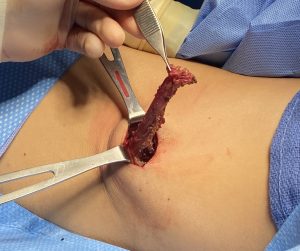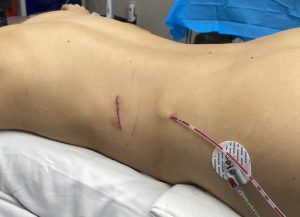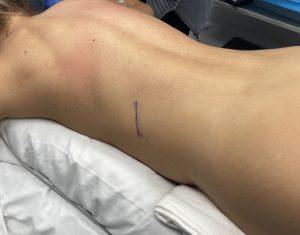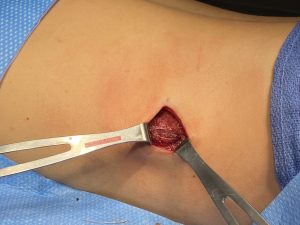Rib removal surgery is the internal framework modification approach for waistline reduction/narrowing. While much focus is on the removal or changes in shape of the lower ribcage, particularly the unattached #11 and 12 ribs, there are other tissue reductions that are done as well. At least this is true in the rib removal approach but not the rib fracture/osteotomy method. This other tissue refers to the LD or latissimus dorsi muscle.
The LD muscle contributes to the width of the waist as its lateral border extends further to the side than that of the ribs. It is also quite thick and is the first piece of relevant anatomy that is encountered once past the subcutaneous fat layer under the skin. In my traditional rib removal approach the LD muscle is partially transacted from its lateral border over rib #11. Then once the rib removals are done wedges of the muscle are taken above and below the initial transverse cut for the muscle removal to complete the procedure.


The contribution of the width of the LD muscle is not well appreciated. Structural waist reduction focuses on the ribs as their shape and composition suggest a significant effect on the shape of the waist. But in doing rib removal surgery the first major structure encountered is the LD muscle which has be gotten through to get to the ribs. In so doing its thickness and width can be appreciated. It extends out laterally a considerable distance from that of the lower ribs. It is logical to assume therefore that reducing its width will also make a contribution to waist reduction.
Dr. Barry Eppley
World-Renowned Plastic Surgeon




